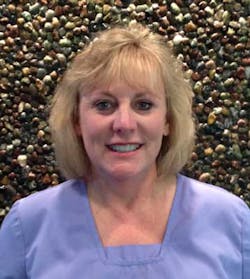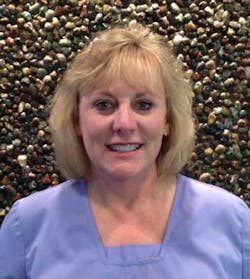A solution to cross-contamination in the dental practice
“60 Oklahoma dental patients test positive for Hepatitis, HIV.” (04/18/13 ABC News)
RELATED |The ADAA addresses the dental tragedies in Oklahoma and Colorado
Cross-contamination continues to be a major problem for every dental practice. The major culprit is the dental mixing pad. These pads are compressed paper on a cardboard base. The pads are used to mix any dental materials such as cements or bases. At this point, you have already been working in the patient’s mouth with gloves containing saliva, blood, or plaque when you touch the sides and bottom of the mixing pad. The pad has about 65 sheets, so you have used the mixing pad with 65 patients. The pad is on cardboard, which becomes porous like a dirty sponge. This mixing pad cannot be disinfected nor can the pad be covered with a barrier. You mix, deliver, and tear off the top sheet, then place the used pad in the drawer with the clean 2 X 2 or cotton rolls or leave it out on the counter to be aerosoled. To prove conclusively that contamination is taking place, an independent lab was hired to culture several used mixing pads. Colonies of bacillus and gram-positive cocci were found. Colony count was between one and 296 colonies. The risk of patient-to-patient contamination is high.
RELATED |Study: Dental bib clips can harbor oral and skin bacteria even after disinfection
This cross-contamination problem has been discussed with the Health Department, SPICE, Occupational Safety & Health Administration (OSHA), U.S. Food and Drug Administration (FDA), Centers for Disease Control and Prevention (CDC), and Healthcare Infection Control Practices Advisory Committee (HICPAC). It has been suggested to double-glove or change gloves before using the mixing pad. How will dental auxiliaries know to change gloves when they are not aware of the problem? How would the dentist change gloves to base a tooth, going back and forth from the mixing pad to the patient’s mouth? Would you just double-glove for all procedures? This scenario would be quite expensive and time-consuming.
Why are we using the mixing pad as one unit? We have been taught in dental school to mix on the pad as one unit. The picture diagrams showing how to mix cements and bases show the gloved hand and mixing pad used as one unit. Mixing pads can be purchased with a nonslip base, which suggests that they are to be used as one unit.
The CDC recommends Guidelines for Infection Control in Dental Health-Care Settings — 2003. It states that dental patients and dental health-care professionals can be exposed to pathogenic microorganisms including cytomegalovirus (CMV), HBV, HCV, herpes simplex viruses types 1 and 2, HIV, mycobacterium tuberculosis, Staphylococci, Streptococci and other viruses, and bacteria that colonize or infect the oral cavity and respiratory tract. These organisms can be transmitted in dental settings through 1) direct contact with blood, oral fluids, or other patient materials; 2) indirect contact with contaminated objects (e.g., instruments, equipment, or environmental surfaces; 3) contact of conjunctival, nasal, or oral mucosa with droplets (e.g., splatter) containing microorganisms generated from an infected person and propelled a short distance (e.g., by coughing, sneezing, or talking); and 4) inhalation of airborne microorganisms that can remain suspended in the air for long periods.
The CDC states: “Exposing patients or dental health-care personnel to water of uncertain microbiological quality, despite the lack of documented adverse health effects, is inconsistent with generally accepted infection control principles.” This statement also applies to the use of the dental mixing pads.
There is a solution to the problem of cross-contamination. It is the use of the dental mixing sheet dispenser, U.S. Patent application #12/915443. This is an injection-molded device, which houses the dental tape and is completely enclosed. The dispenser opens with a tap. It slides open and is held open by a magnet. The paper is then pulled to the desired length and torn off by pulling against the cutting edge. This now is a single-use mixing sheet. The only paper touched is the portion of paper that will be used on that individual patient. There is no opportunity for cross-contamination. To close the dispenser, tap at the back and it glides forward to a closed position.
The paper roll is waterproof. It has light adhesive on the back side. The paper is easy to use, stays flat down on the countertop, and is repositionable so as to mix in another direction. It will stick to the glove delivered to the dentist. The size of the paper is at your discretion. This is the only product of its kind in the industry. The design stops the opportunity to cross-contaminate the mixing sheet.
In conclusion, current mixing pads are an anomaly. The design allows cross-contamination. They are not within the guidelines of infection control as are other products that are single use or that can be disinfected or a barrier placed.
The dental sheet dispenser meets is a real need in the dental industry. The design does not allow cross-contamination and is convenient. The dispenser is not only necessary but economical. The dental tape dispenser is a true advancement in dentistry. We are only as strong as our weakest link.

